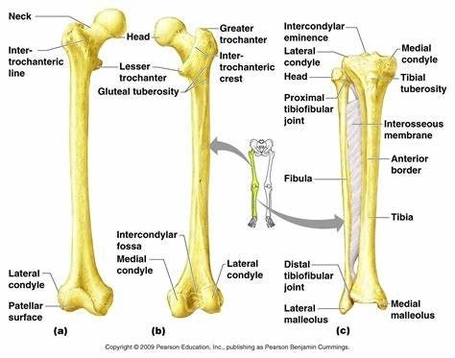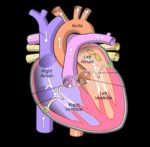The human leg, a marvel of biological engineering, is a complex structure composed of numerous bones that work in harmony to provide support and mobility.
Femur (Thighbone)
The femur, or thighbone, is the longest and largest bone in the human body. It plays a crucial role in creating the ball-and-socket joint of the hip at its top and the knee joint at its lower end. The femur is also one of the strongest bones and can account for about a quarter of someone’s height.
Tibia (Shinbone) and Fibula (Calf Bone)
The second largest bone in the body is the tibia, also known as the shinbone. This long bone connects with the knee at one end and the ankle at the other. Adjacent to the tibia is the fibula, the thinner, weaker bone of the lower leg. Also known as the calf bone, the fibula sits slightly behind the tibia on the outside of the leg and is connected via ligaments to the two ends of the tibia.
Patella (Kneecap)
The patella, commonly known as the kneecap, is at the center of the knee. It aids in knee extension and protects the joint. As the knee bends, the patella slides along a groove in the femur.
Tarsals, Metatarsals, and Phalanges
Below the tibia and fibula are seven bones known as the tarsals. These make up the ankle and upper portion of the foot. The seven tarsal bones include the calcaneus (heel bone), talus (ankle bone), cuboid, three cuneiforms, and navicular.
The five metatarsal bones in each foot create the body of the foot. Numbered one through five, the bone that sits behind the big toe is No. 1 and the one behind the little toe is No. 5.
The phalanges make up the toes. Each toe consists of three separate bones and two joints, except for the big toe, which only has two bones and one joint like the thumb in the hand. The three toe bones include the distal phalanges at the tip, middle phalanges, and proximal phalanges closest to the metatarsals. The big toes dont have middle phalanges.
Conclusion
The human leg bone structure is a testament to the intricate design of the human body. Each bone, from the largest femur to the smallest phalange, plays a vital role in providing support, enabling movement, and maintaining balance. Understanding this structure is not only essential for medical professionals but also for anyone interested in the remarkable complexities of human anatomy.


